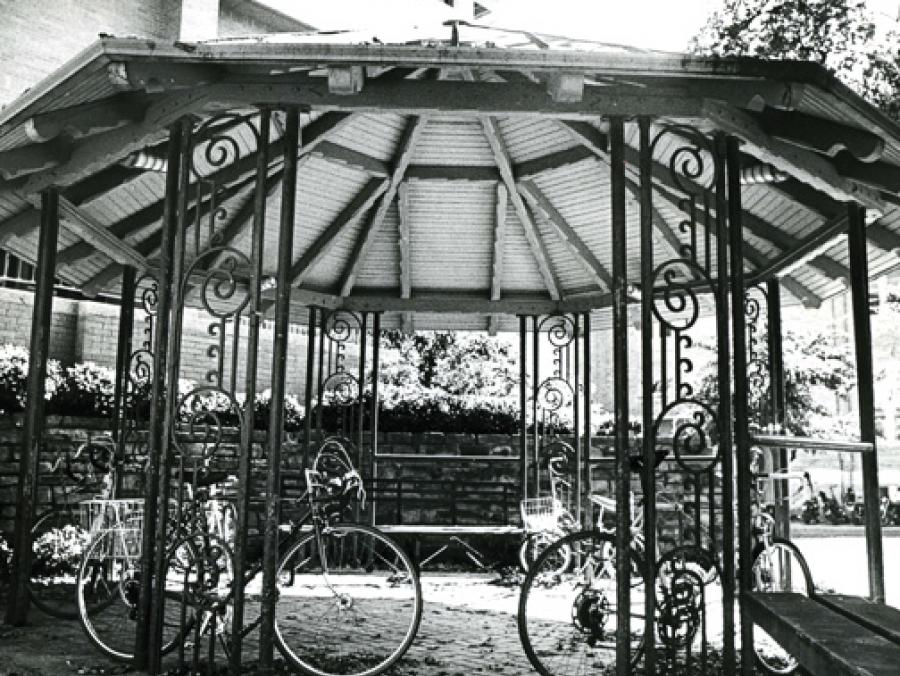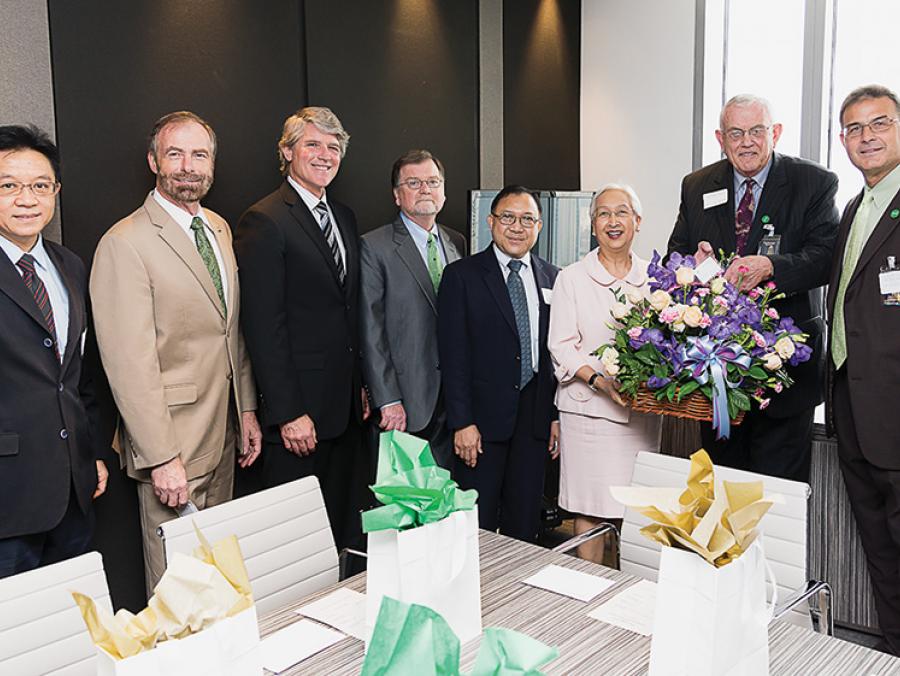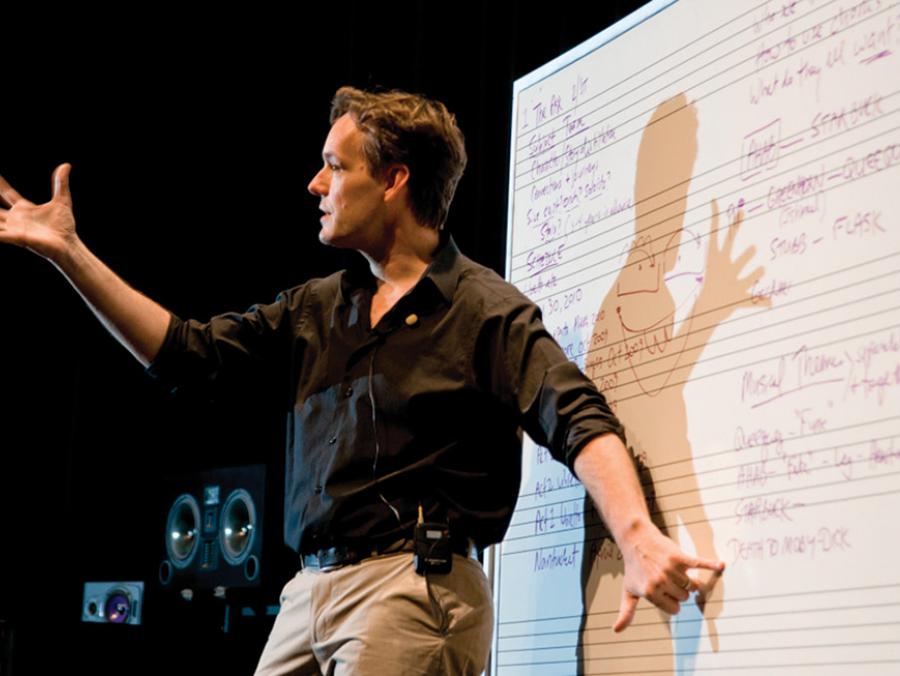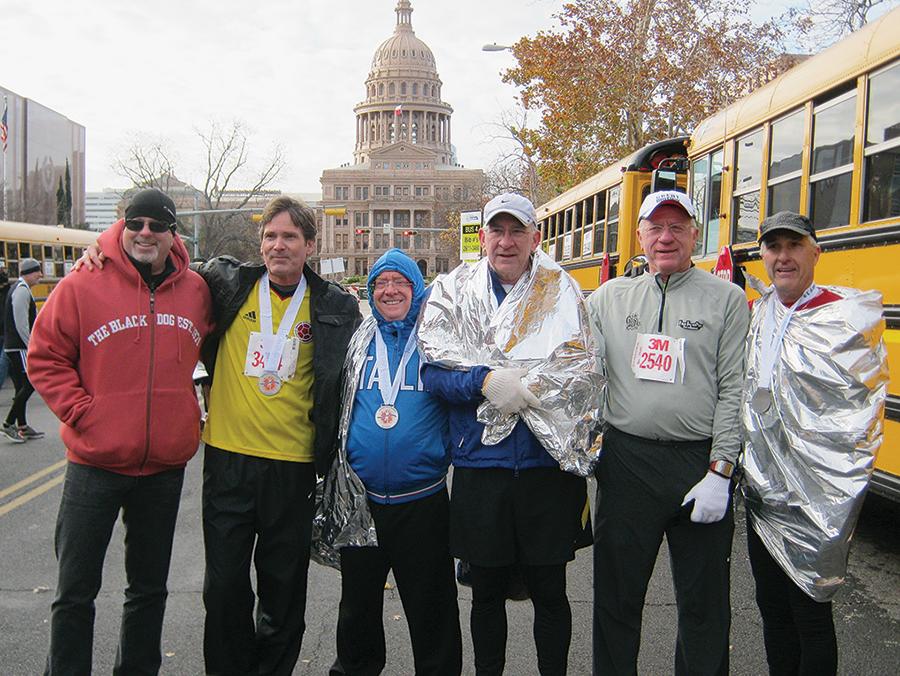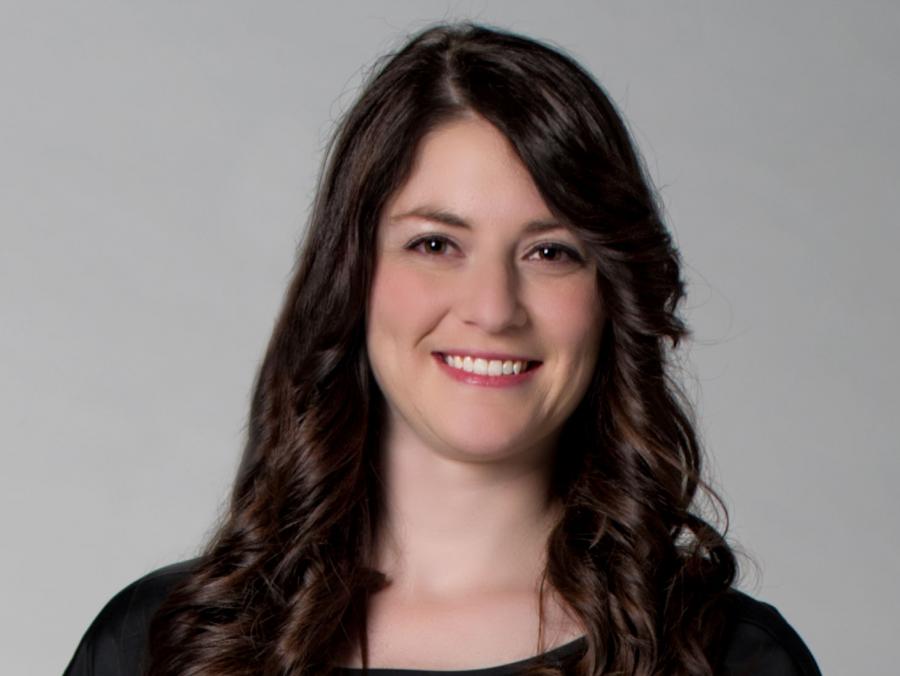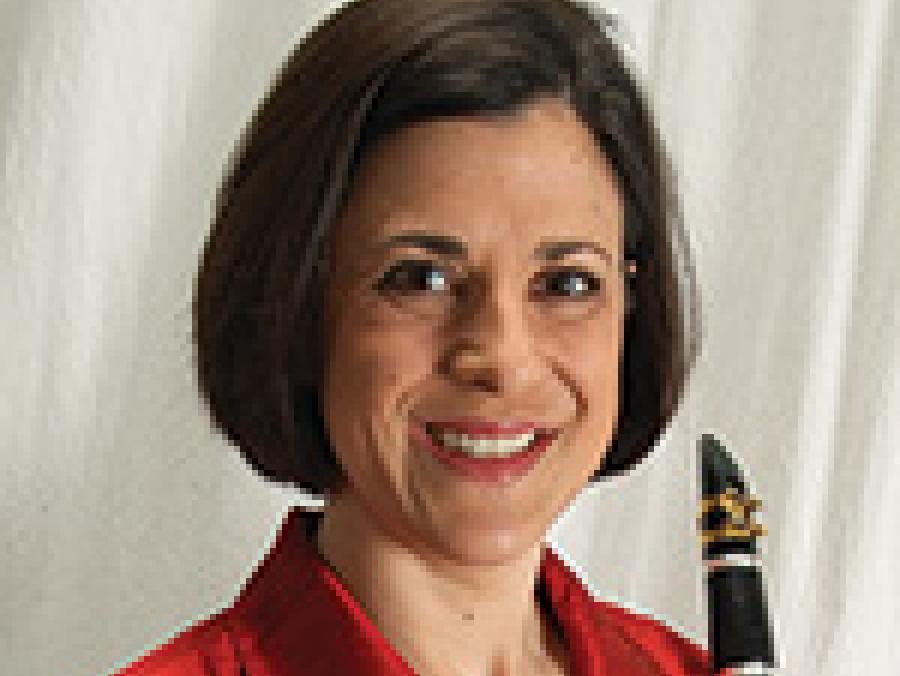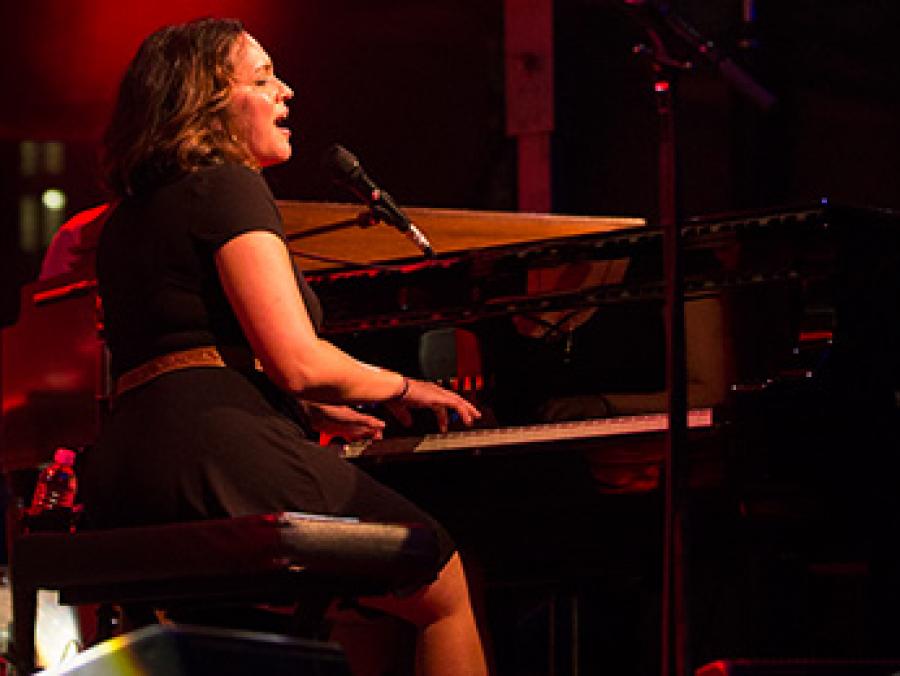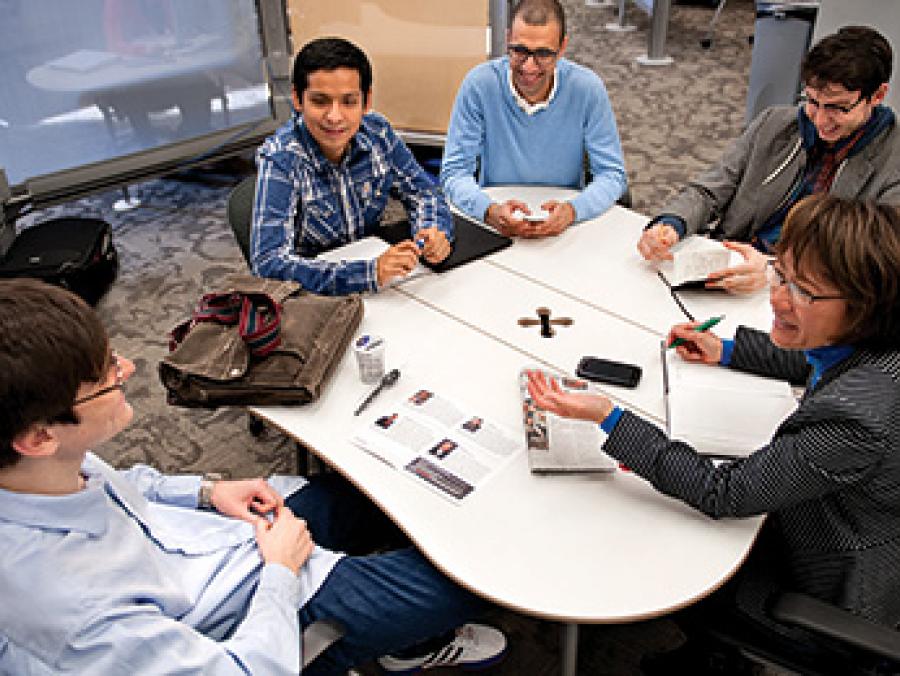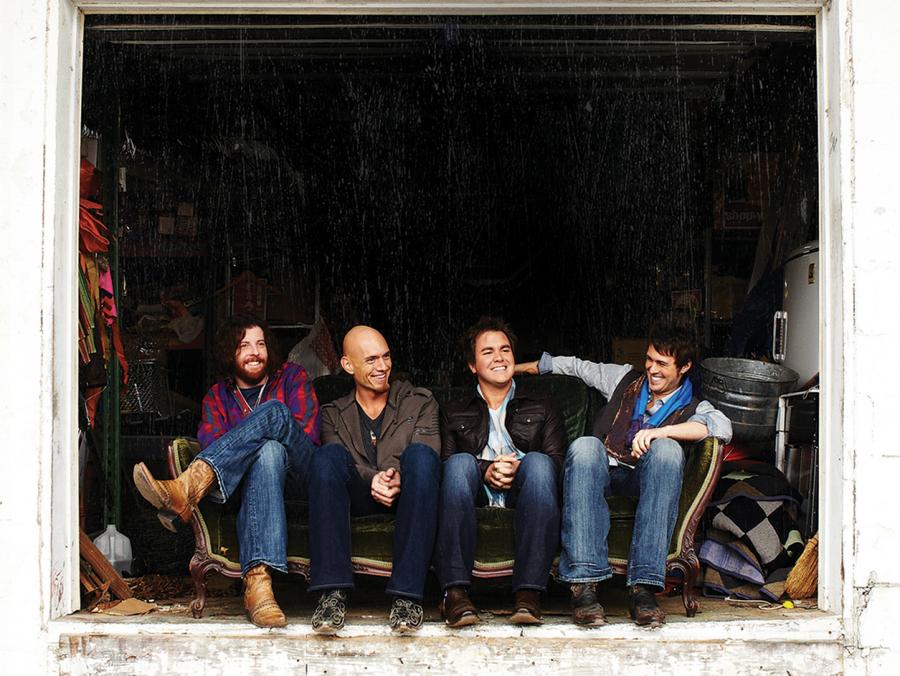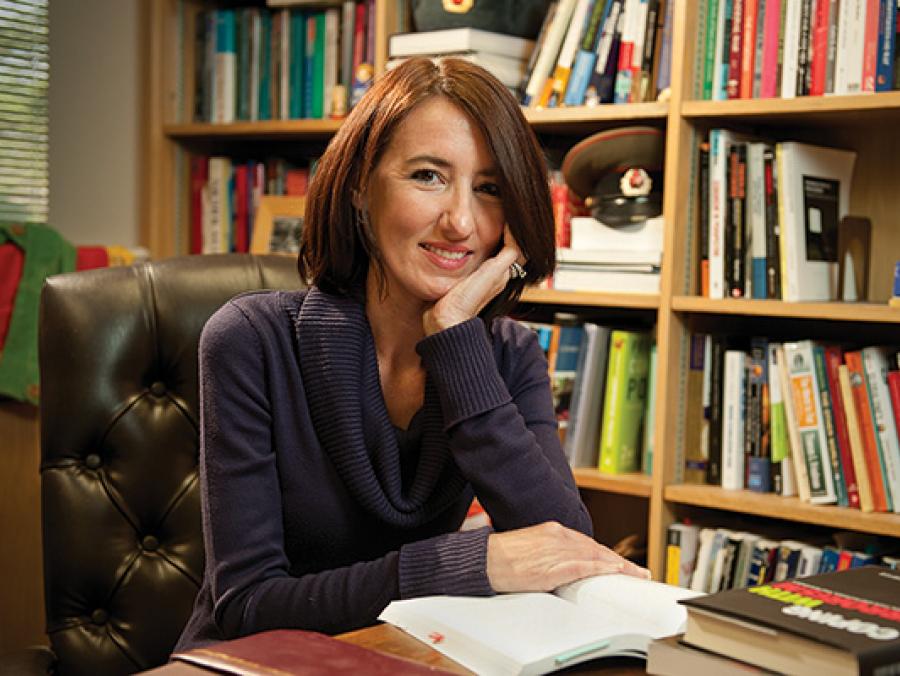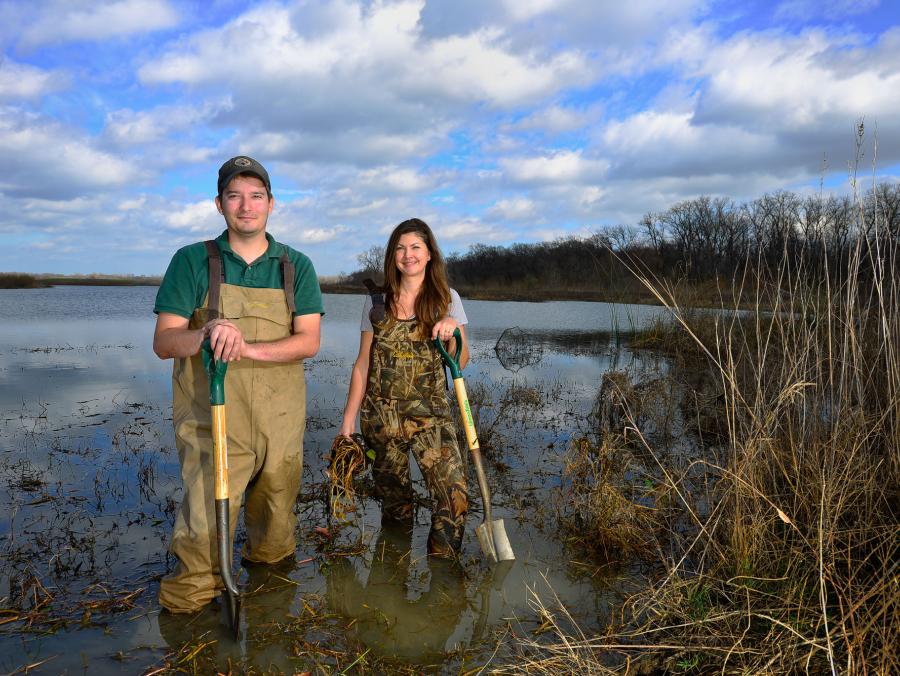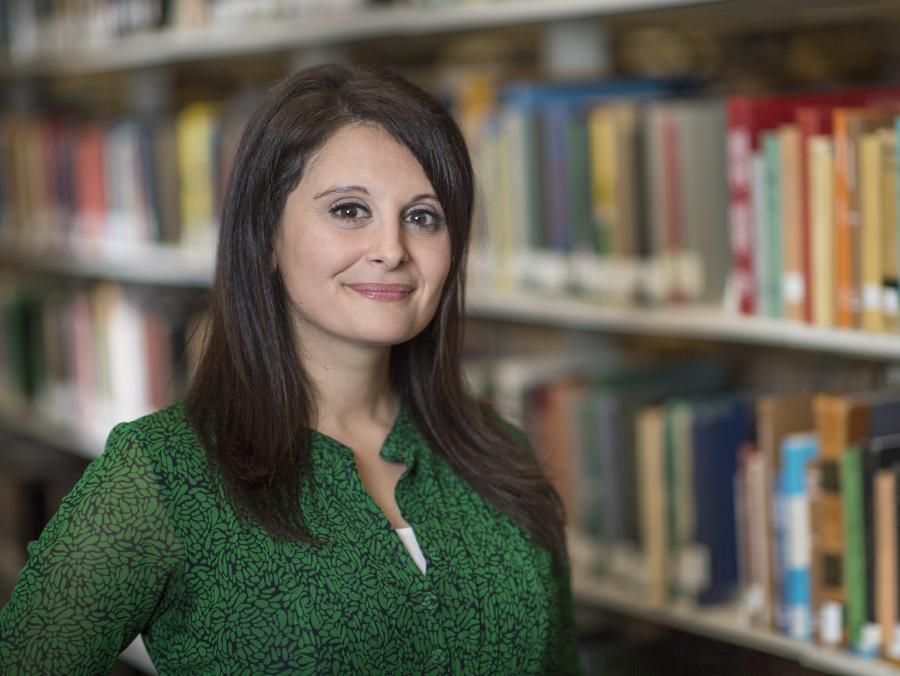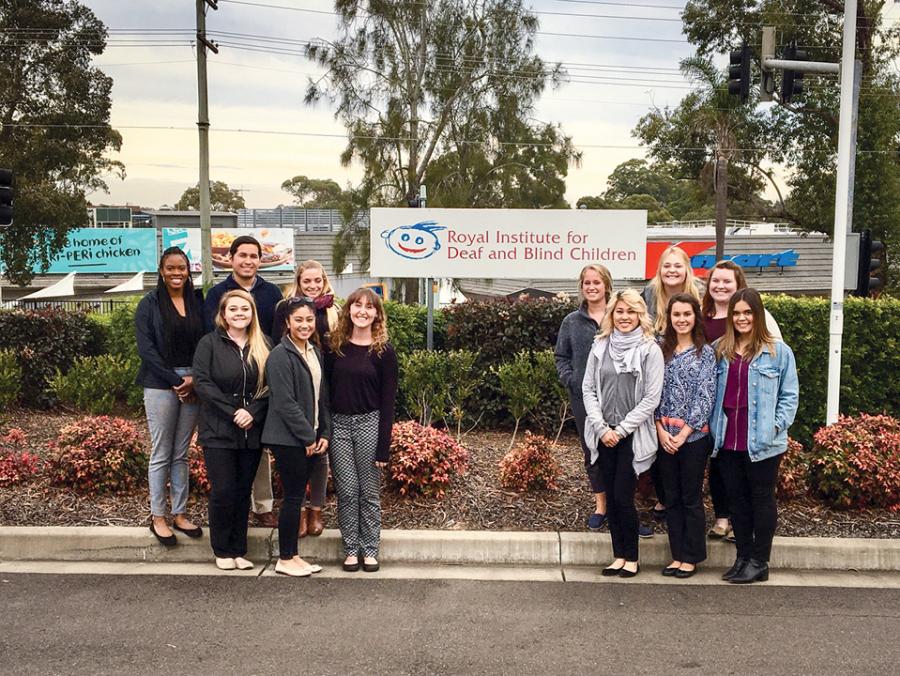 Drawing and painting graduate Laura Harrington ('05) wakes up mornings to the sound of church announcements on loud speakers, monkeys running around on the roof and chickens clucking in her compound — the start to a typical day for the Peace Corps volunteer, stationed in Bonga, Ethiopia.
Drawing and painting graduate Laura Harrington ('05) wakes up mornings to the sound of church announcements on loud speakers, monkeys running around on the roof and chickens clucking in her compound — the start to a typical day for the Peace Corps volunteer, stationed in Bonga, Ethiopia.
After un-tucking her mosquito net and brewing coffee in her French press, she sets off on a journey to the school where she teaches English. With no transportation in sight, she takes a 25-minute walk through a jungle filled with flowers, animal fields and coffee trees. As Harrington approaches the school, she is greeted by a world map mural that she and her students have been working on to decorate the building.
But teaching English to the children and teachers at the school is only a small fraction of her work. She helps to empower women and gets involved in the social issues that have posed problems for the Ethiopian culture, including malaria and HIV.
Get to know
Laura Harrington
"I could work 14-hour days, seven days a week if I wanted to," Harrington says. "I would never run out of meaningful work and true community support."
Harrington joined the Peace Corps because she wanted to volunteer, travel and experience another culture. She says her painting professors at UNT, like watercolorist Millie Giles, also had an influence.
"They always encouraged us to be genuine and follow our own creative voice, and that mindset has been integral to me joining Peace Corps and becoming a successful volunteer," she says.
Fighting disease
Throughout the local schools in Bonga, Harrington has implemented new malaria and HIV prevention programs and strengthened existing programs. And, on a larger scale, she coordinated a march for World Malaria Day, an international holiday celebrated on May 23.
Harrington organized more than 100 students and teachers to participate in the 5-mile march in 2012. To enhance visibility, she held a sign competition and encouraged students to bring mosquito netting. They also wrote poems and speeches that were presented at the end of the march.
"I had no idea how to organize a march, but that's the beautiful thing about working as a Peace Corps volunteer. You get awesome opportunities to think on your feet," says Harrington, who is planning an even bigger march for this year's celebration and is hoping for double the participation.
Building esteem
Harrington says she also enjoys working with young women in Ethiopia. She and fellow Peace Corps volunteer Katie Olean are working together on a new program, University Preparation Camp, for girls attending the university in the city of Jimma. Harrington has extended her Peace Corps commitment to move to Jimma and continue work on the camp.
"The program is designed to help retain these students who may have come from a very rural village and are completely overwhelmed by living in a larger city away from their family," Harrington says.
The camp is held on the weekends in Jimma, which is three hours away from Bonga. The program targets first-year female university students and helps train them in the life skills necessary to make it through school. It covers topics such as good study habits, self-esteem building and HIV prevention.
Just as these young women must learn to adapt to a new lifestyle, Harrington must do so as well. She says that learning Amharic, the national language, was one of her biggest challenges.
"My Amharic is pretty good but it is a very complicated and rich language with its own alphabet. As a visual learner, I find it especially difficult to learn a new language," she says.
Art talents
 Harrington also uses her talents as an artist in numerous programs, including Artists Trading Cards, a web-based community that promotes the sharing of artwork. She and her students produce drawings and paintings that they trade with an art class in America. Harrington was able to collaborate with an American teacher, who sent art supplies to the students.
Harrington also uses her talents as an artist in numerous programs, including Artists Trading Cards, a web-based community that promotes the sharing of artwork. She and her students produce drawings and paintings that they trade with an art class in America. Harrington was able to collaborate with an American teacher, who sent art supplies to the students.
She also creates her own artwork on the side when she's not busy with her Peace Corps work. One watercolor series included Ethiopian people at work, from a young girl cooking food and a young boy hauling firewood to a middle-aged construction worker.
"I love to paint people, to capture a part of them and have that resonate in my work," Harrington says.
She changes mediums and themes depending on her environment.
"I definitely think my experiences at UNT gave me the confidence to embrace my creativity," she says, "and not let it be limited."




